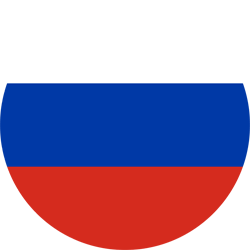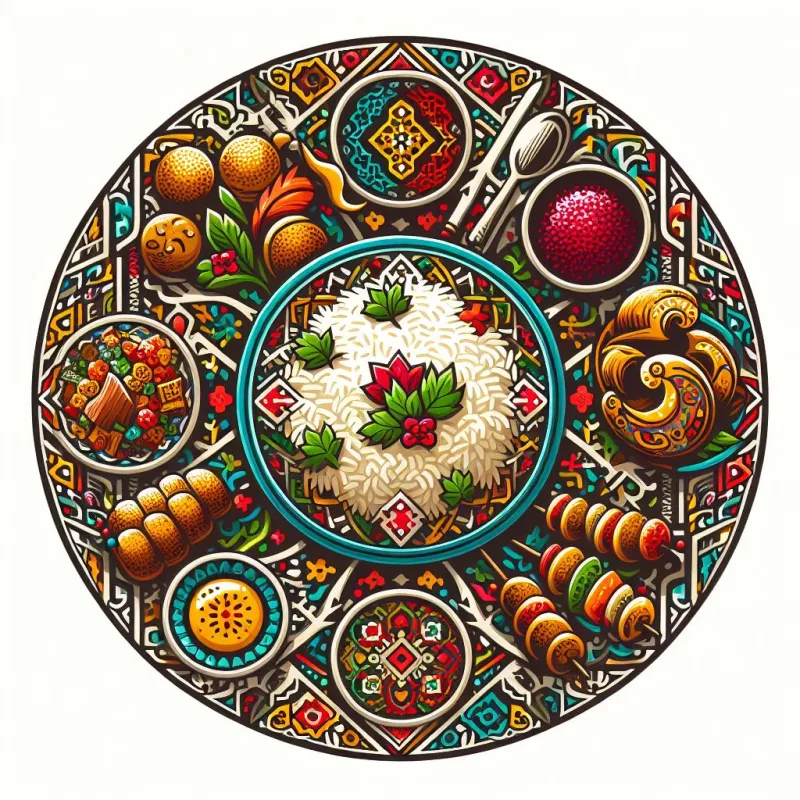1705758344.jpg)

Description
Gastronomic hospitality in Jakhongir brother's house, which prepares excellent Samarkand plov, will be enjoyable.
Foods
-
1-cuisine
-
Plov
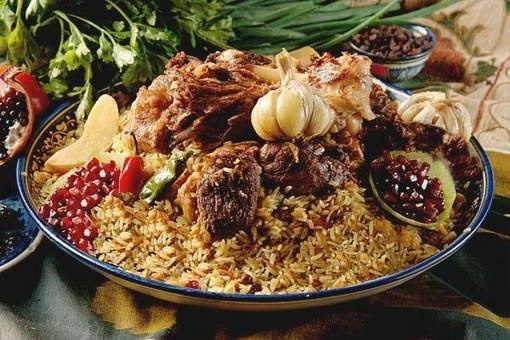
Plov is the main dish of Uzbek cuisine, and it holds a special place in the heart and taste of many people. It is a hearty, fragrant rice dish cooked with a mixture of meat, onions, carrots and spices. The dish is usually prepared in a large, heavy pot called a cauldron or deg, which allows for even cooking and the development of the desired crust known as a "cauldron". The main ingredients of Uzbek plov are rice, meat (often lamb, beef or chicken) and aromatic vegetables such as onions, carrots and garlic. The dish also contains spices such as cumin, coriander, and sometimes dried fruits and nuts, which provide a rich, complex flavor profile. Making Uzbek plov involves a unique method in which the rice and meat are layered in a pot, allowing the flavors to meld during the slow cooking process. The meal is often served with side dishes such as achichuk (fresh tomato and onion salad) and delicious yogurt. Uzbek plov comes in different regional variations, with cities like Samarkand, Tashkent, and Bukhara each adding their own flavor to the favorite dish. Uzbek pilaf is the pinnacle of culture, tradition and culinary art, from its rich history rooted on the Silk Road to its importance in social gatherings and celebrations.
-
Mastava
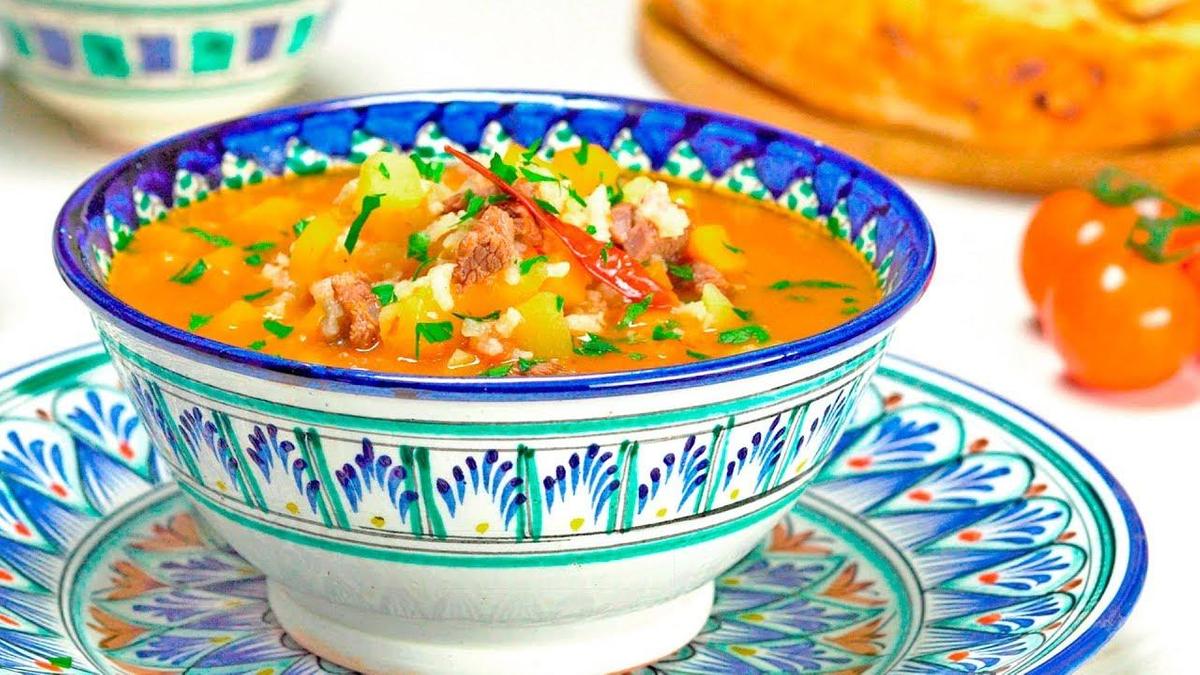
Mastava is a liquid food that is popular in eastern cuisines and is a healthy dish. Mastava is rich in vitamins and is loved by both young and old alike. In fact, Mastava is made by boiling rice in whey made from curd. Now it is made from carrots, onions, rice and other ingredients. According to the ingredients and the method of preparation, there are such types as boiled Mastava, fried, cherry, minced and sour Mastava. The main type of Mastava is prepared by boiling minced mutton. This one is our favorite and preferred recipe for cold winters. In folk medicine, this mastava is a good cure for high temperature, if eaten with freshly grounded pepper.
-
Liver kebab
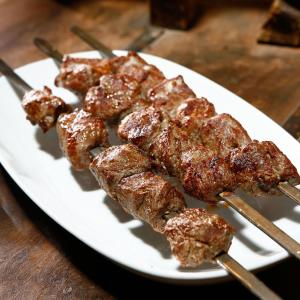
Take the liver of a freshly slaughtered sheep or cow and cut it into 15-16 grams of fat. After this, the pistachios are cooked on coals. It should be noted that the liver kebab should not be over-fried and harden. It is better to eat the liver kebab while it is still hot, if it gets cold, both the taste and the health will be reduced. Liver kebab is served on the table with cumin-onion and fresh vegetable side dishes.
-
Moshkhorda
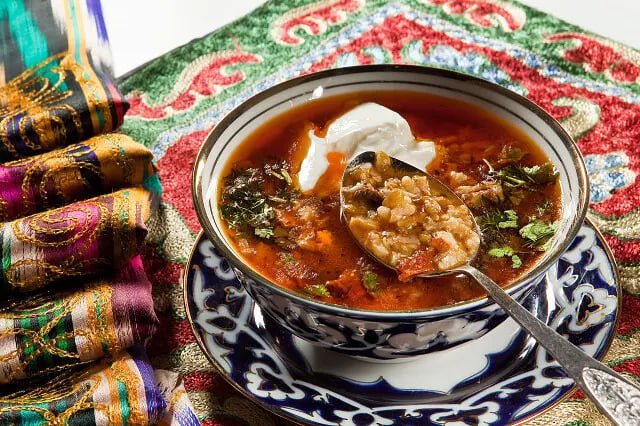
Moshkhorda is a liquid dish made with rice and mash. This name is derived from the Tajik word mosh, which means "round, dark green grain of a leguminous plant" and the past participle form of the verb khordan, which means "eat-drink". It is composed in the Uzbek language and means "liquid food made from rice with mash". According to the ingredients and the method of preparation, there are types of mashkhorda with minced meat, mashkhorda with meat, and mashkhorda with skin. Ancient healers used this food as a diet that relaxes the nerves, clears the eyes, reduces bile, and cools fever by sweating well. The native land of mosh is India, it is widespread in Asia and Africa, but it is not cultivated in America and Europe. In these places, it is called "small brown peas of Asia" or sometimes called "yellow bean". It belongs to the legume family, the grain is dicotyledonous, similar to peppercorns, but round-cylindrical in shape, 1000 grains weigh from 30 to 80 grams. The color can be different: brown, dark green or brown. The best is the dark green one, which is easy to cook, tastes good and has a unique smell. The longer the mosh is stored, the more its color changes to brown, it becomes hard, it becomes harder to ripen, and its taste is reduced. Therefore, mosh cannot be stored for more than one year, the sooner it is used, the better and more useful it is. It should also be noted that in folk medicine, it is said that it is better to eat moshli food in the summer, during the day, it is difficult to digest when eaten in the winter and in the evening, and it boils the stomach. Mosh contains up to 45-50% starch and 25-30% protein, which does not remain from meat. Because of this, moshli dishes are very tasty and nutritious. Mosh also contains up to 2-4% fat, various mineral salts and some medicines. The following thoughts of Abu Ali ibn Sina about mosh are very valuable for us: "Mosh. Its grain is close to that of a large bean. The best time to eat it is summer. Humidity and dryness are moderate. Peeled mosh is temperate, unpeeled is prone to dryness.
-
Fat-liver kebab
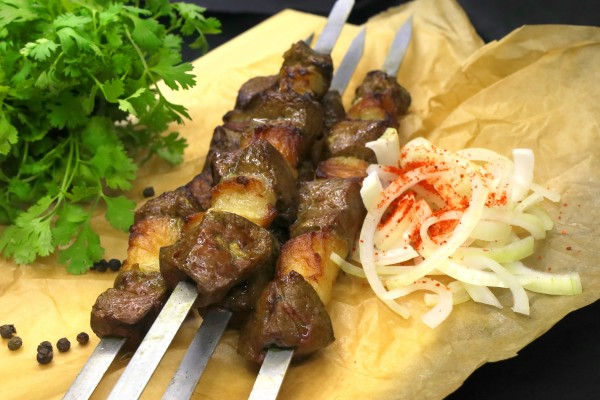
This special dish was created by ancient cooks in order to increase the healing capacity of the liver and, most importantly, to make the liver tastier and reduce the fat content of the buttock by 50%. Buttock fat is removed from the liver. The liver is divided into 15-gram pieces, and the buttock is slightly smaller - 10-gram pieces. There are two ways to cook this kebab. In the first one: one piece of liver and one piece of fat are cut into six pieces before being placed directly on the fire. ; in the second way: mix the sliced liver with the onion mass sprinkled with those spices on the surface of the oil. After it has been harvested, the bread is rolled with flour and then it is harvested. In both methods, the embers must not be strong, otherwise the fat will melt and catch fire, darkening the kebab. Therefore, it is recommended to cook it on pistachio charcoal (charcoal of fruit trees). Or if coal is lit, sand is sprinkled on the surface of the embers, and the kebabs are fried without fanning them. When serving, a few portions of sikhi are placed on a plate or two sikhs per plate, and the face is smeared with grape or apple vinegar. As a side dish, choose one or more fresh vegetables such as cumin-onions, green onions, radishes, cucumbers, tomatoes, and radishes.
-
Minced kebab
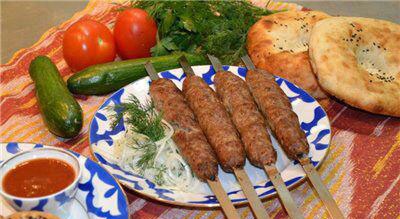
This traditional dish came to us under the influence of Azerbaijani cuisine, and its original name is "Lola kebab". "Lola" means "round pillow" in Turkish. Diet is in its fast digestion. It is prepared for holidays and weddings, and it is very popular when it is put on the table of a dear guest. It is necessary to prepare such a kebab from fresh and fatter meat. The meat is passed through a mincer. It will be even tastier if minced meat is mixed with mutton and beef. If you add finely sliced onions to the minced meat, it will increase its consistency. Egg white is added to increase the stickiness of the minced meat and prevent it from leaking when cooked. To improve the taste, add coriander seeds, pepper and salt and mix. Take a handful of the prepared minced meat, crumple it into six, and make it like a round pillow (cucumber) with a length of 8-10 cm. The surface is covered with breadcrumbs so that the juice does not flow. Pistachios are cooked on charcoal. Real Azerbaijani cooking is done in the heat of grape rust. Because the smoke of the grape rust gets into the minced meat, it will decorate it. Place two or four kebabs on a plate and garnish them with cumin-onion or fresh vegetables.
-
Sikh kebab
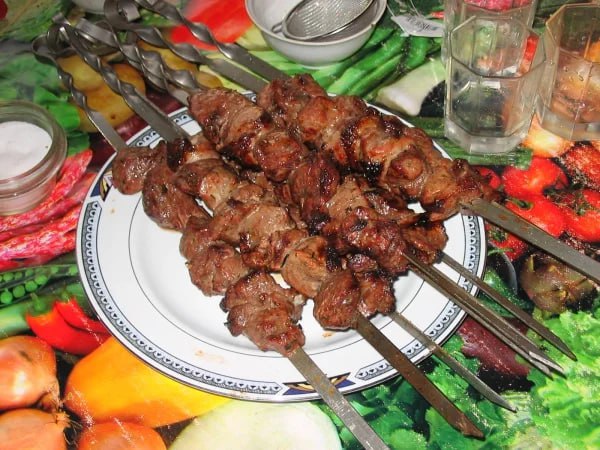
Six kebab is popularly called shashlik. "Shashlik" means "Sikh" in old Turkic languages, because "shish" means Sikh. "Kabob" means roasting. That is, this food, which is fried on a sikh, is taken from the most ancient dishes of mankind, especially primitive herdsmen. In those days, six was made of non-metal, of course. People cooked pieces of meat on sticks. It is impossible to keep pieces of meat lined up horizontally, because it will burn and fall off. For this purpose, wooden six (skewers) with meat were stuck vertically into the ground and cooked by exposing them to coals from the side where the wind blows. The custom of putting a piece of oil on the end of the kebab is from that time. This fat melted and seeped into the rows of meat below. Now, putting fat on the tip of the kabob is only a matter of construction and has no practical value, because the fat on the tip of the kabobs, which are placed horizontally on the fire, will flow out and catch fire without getting absorbed into the meat. "Shish" is six and its height is described in the book "Kyrgyz cuisine". For kebabs, thigh and thigh meats, buttock fat are food and always cut into the size of the first joint of the head bar. That is, it will be pieces of 15-16 grams. The fat is cut in the same size. Put it in a bowl and sprinkle with salt, cumin, coriander seeds and pepper. Finely chop the onion and mix well. That is, the meat is taken in handfuls and thrown back into the pan. It is mixed with mineral water, so that the water, onion juice, salt and spices are well absorbed into the meat. Only then will the kebab cook well. If there is freshly slaughtered sheep or beef, it can be cut without vinegar, sprinkled with salt and cooked in a six. Even if the meat itself is fresh, but it has become dry due to wind, it is vinegared. During pickling, spices, onion juice, mineral water and sour juices such as pomegranate, cherry, tomato are crushed. Kebab meat is cooked only on the basis of boiling water. This is the purpose of pickling, if the meat is not tender, the surface will quickly burn on the coals, and the heat will not penetrate inside the shell, as a result, the top will be burnt and the inside will be raw, and the good food will be wasted. Well-ground meat can be immediately transferred to the sieves and cooked, and unground meat can be left in a cool place for several hours to absorb the juices and spices. When we say vinegar, we should not come to the conclusion that vinegar is added to it, some people add vinegar to raw meat and take it away. It is a mistake to do this, because vinegar (especially white vinegar) will remove all the fat from the meat, it will be difficult to cook, and even if it is cooked, it will be tasteless. In fact, it is eaten by sprinkling vinegar on the face of the ready kebab. For this purpose, we recommend using only grape, apple and fig vinegars. Sliced meat is cut into four, six, or eight pieces depending on the length of the thigh, and traditionally the last piece is the thigh.
-
Dimlama

Dimlama is a dish prepared by dipping. It is cooked from meat or fish, various vegetables and some fruits. D. is palatable and easy to digest, because the useful substances (vitamins, mineral and sugar substances, aromatic and tasty extractive substances) of the food prepared by the steaming method are preserved. There are several types of D.: meat D., fish D., pumpkin D., quince D., vegetables D., etc. Meat D. - the meat and thighs are cut into pieces, the bones are also cut into 2-3 cm lengths, then mixed with finely chopped onions, salt and spices. First add fat, then bone, and then sliced meat to the heated pot. A bay leaf, ground pepper, and dill are placed on each layer, a little water is poured to create steam, and the lid is covered with gypsum and a towel is wrapped around it. 40 min. cooked during. The meat is served in plates and bowls. Pumpkin D. - pumpkin is peeled and seeded, cut into matchbox-sized pieces, then sprinkled with salt and fried a little in butter, pour more liquid cream over it and simmer for 30 minutes on low heat. cooked during.
-
Boiled soup
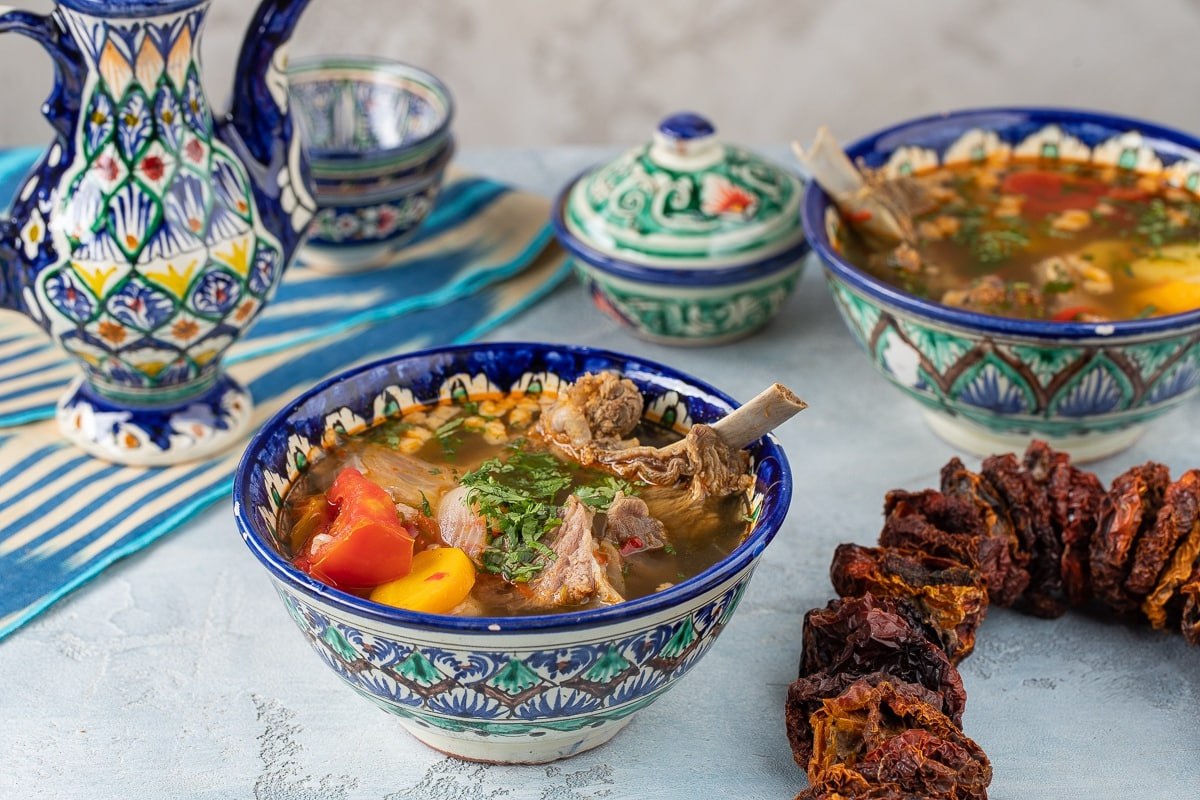
Boiled soup - mutton (breast, ribs, a little fat) is boiled in cold water in a pot. The foam of the soup is not removed (the foam will disappear by itself after adding the onion). Add peeled whole carrots, sliced tomatoes, salt and spices to the soup along with onions. After the soup boils for 40-50 minutes, add peeled whole potatoes and lower the heat and simmer. As soon as the potatoes are cooked, the soup is removed from the heat and served in bowls.
-
Besh-Panja kebab
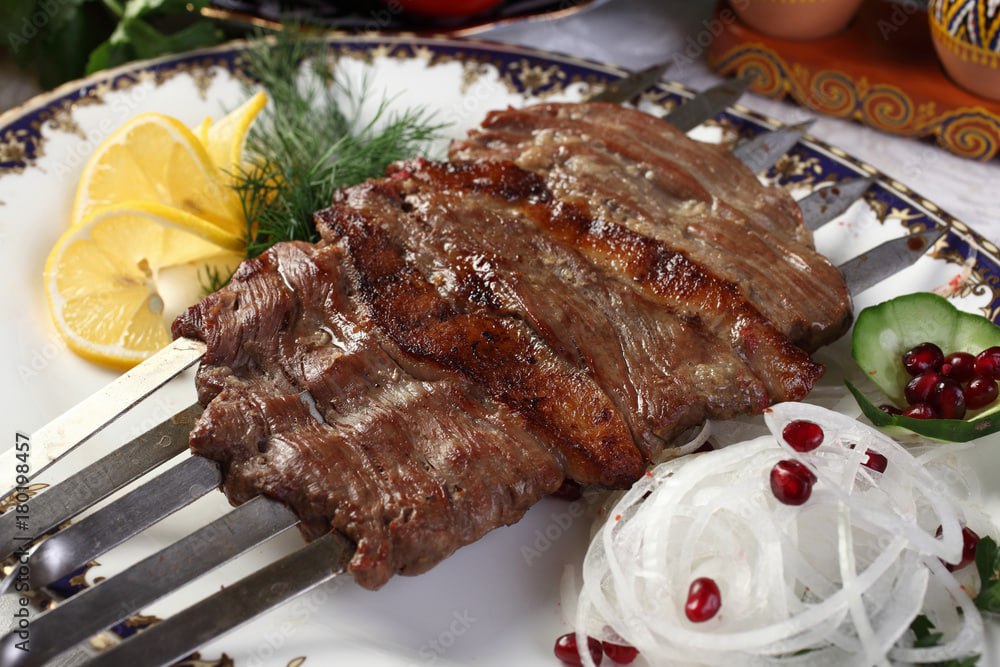
A large piece of beef or mutton and the fat of the rump is weighed in five skewers. Although the taste of this kebab is not different from that of a regular kebab, it gives more appearance to the table than a regular kebab.
-
Chicken kebab
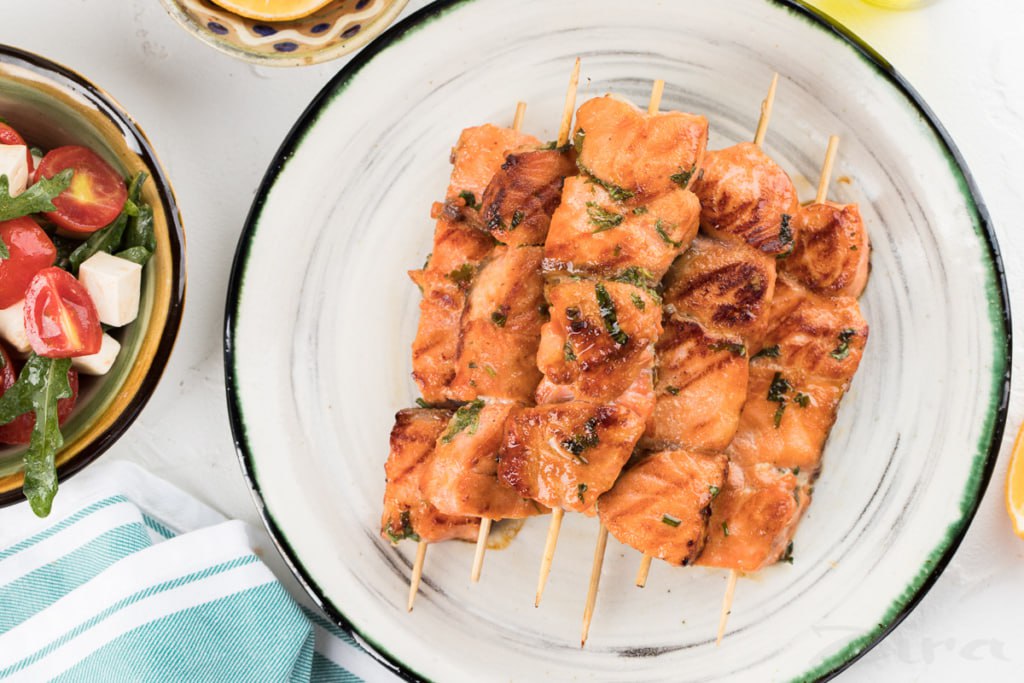
Although chicken kebab is not an Uzbek national dish, it is one of the favorite dishes in Uzbek cuisine. This diet food is very tasty.
-
Mowkichri
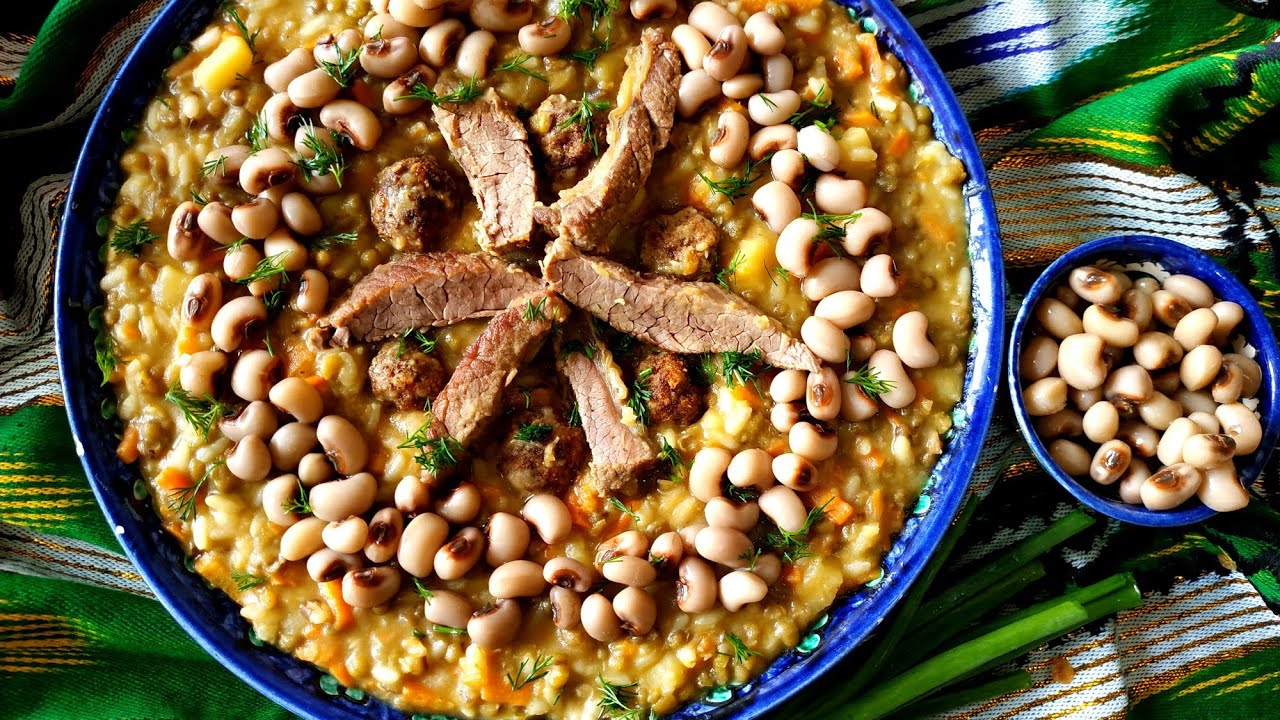
Moshkichri dish is one of the famous national dishes in Uzbekistan. The main ingredients of this dish are eggs called moshkichri (wild) and makkor (rice). Moshkichri dish is usually prepared in kitchens and at home and is loved by many people.
-
2-cuisine
-
Desert
Conveniences
- Wi-Fi mavjud
- Jamoat transporti
- Avtomobil to'xtash joyi
- Oilaviy
- Konditsioner
- Isitish tizimi
- Mashhur joylar



